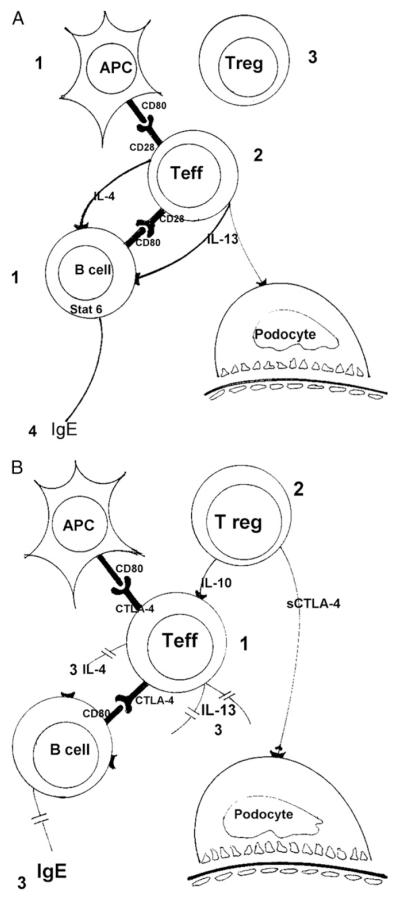Figure 1.
(A) (1) Antigen-presenting cells (APCs) and activated B cells express CD80, which binds to CD28 on the (2) T effector (Teff) cellular membrane. In the absence of suppression by (3) T regulatory (Treg) cells, T effector cells release interleukin 4 (IL-4) and IL-13. These 2 cytokines trigger (4) the switch from immunoglobulin M (IgM) to IgE in the B cell. (B) T effector cells express cytotoxic T-lymphocyte antigen-4 (CTLA-4), which will compete with CD28 for CD80, resulting in (1) decreased activation of T effector cells. In addition, (2) T regulatory cells suppress T effector activation by releasing IL-10 and soluble CTLA-4. These combined events result in decreased production of IL-4, IL-13, and (3) IgE.

